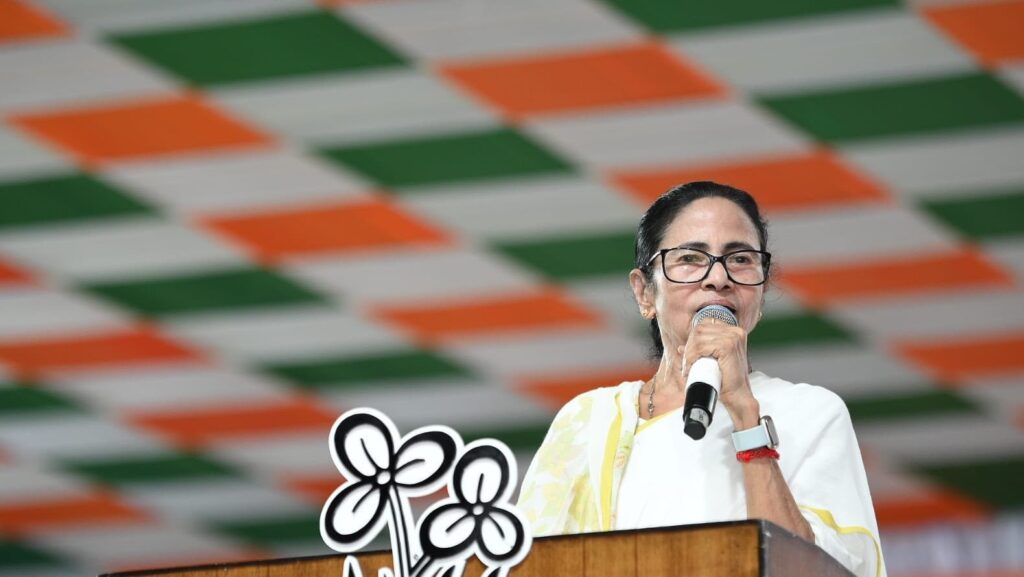KolkataOctober 5, 2025 01:26 PM IST
First published on: Oct 5, 2025 at 01:24 PM IST
Just over six months ahead of the West Bengal Assembly polls, the ruling Trinamool Congress (TMC) has found a new line of attack against the BJP-led Centre. Once again raising the issue of the Centre’s “step-motherly treatment” towards West Bengal, the TMC is targeting the Damodar Valley Corporation (DVC), the Central agency that oversees dams along the Damodar river, for releasing water into the state and creating a “man-made flood”.
Though the corporation has denied the allegations, the TMC is set to gherao the DVC office in Kolkata after Lakshmi Puja on Monday, looking to escalate the issue to put the BJP on backfoot ahead of the Assembly polls.
What is the DVC?
A statutory body set up in 1948, the DVC manages the larger Damodar Valley Project that was the first multipurpose river valley development project in India. The corporation oversees several dams and hydroelectric and thermal power plants in the Damodar river region that is spread across West Bengal and Jharkhand.
The DVC is led by a seven-member board that includes the chairman, four DVC members, and one representative each from the governments of the Centre, West Bengal and Jharkhand.
What has the TMC alleged?
TMC supremo and West Bengal Chief Minister Mamata Banerjee said in an X post last week on Friday, “The latest update on the unilateral and wilful release of water by the DVC is that they have by (Friday evening) released more than 1,50,000 cusecs of water from Maithon and Panchet dams to flood our West Bengal during festival times. This is a deliberate ploy to unleash disaster on us in order to inflict pains on millions when they are still busy in the pujas. Shameful, intolerable, unacceptable! We protest!”
TMC general secretary Abhishek Banerjee said: “It is deeply regrettable that while the people of Bengal sought to conclude their most cherished festival in joy, the Bangla-birodhi (anti-Bengal) zamindars weaponised the DVC by releasing 1,50,000 cusecs of water from the Maithon and Panchet dams, creating a man-made flood with the intent to harm the state.”
He added, “Those who believe they can drown the spirit of Bengal are gravely mistaken. With Maa Durga’s blessings and the strength of our resilient people, it is they, not the people of Bengal, who shall face a solemn Bishorjon (immersion, meaning destruction) in 2026.”

How has the TMC-DVC conflict escalated?
This is not the first time that Mamata Banerjee has targeted the DVC over flooding in West Bengal. Earlier last week, after heavy rains inundated Kolkata, she had said, “Nature is not in our hands. Kolkata Port, Farakka Barrage, the DVC’s Maithon… they have not been dredged for the past 20 years. Whenever it rains in Bihar or Uttar Pradesh, water flows into Bengal. We have to manage everything ourselves.”
In August, the CM had blamed the DVC for floods in parts of south Bengal, alleging “a staggering 11-fold increase in the DVC’s water discharge in 2025 compared to 2024, (which is also) 30 times higher than 2023”. She had described the floods as a “man-made catastrophe”.
DVC sources said at the time that excessive rainfall in the Damodar Valley had forced the release of water. A senior official had said, “We informed the state government before releasing water from the barrage.”
This time too, the DVC has denied the TMC’s allegations, saying it had informed all the stakeholders before releasing water.
Almost exactly a year ago, in September 2024, West Bengal’s Power Secretary and 2000-batch IAS officer Santanu Basu had stepped down from the DVC’s board, over discharge of water.
In an email to the DVC chairman, Basu had said, “In view of the unprecedented and uncontrolled release of water by the DVC from its dam systems, leading to widespread inundation and causing immense suffering to the people in vast areas of the state, I do hereby tender my resignation as the member of state from the board of DVC.”
Even earlier, months after the 2021 Assembly polls which she won thwarting the BJP’s challenge, Banerjee, after visiting flood-affected areas of the state, had written a letter to Prime Minister Narendra Modi, calling the disaster “man made” and holding the DVC responsible for the “unprecedented release of water from the … dams at Panchet, Maithon and Tenughat”.
The CM had written, “Recently, there has been a low-pressure formation resulting in high rainfall in West Bengal and Jharkhand. Nearly, 2 lakh cusecs of water was discharged from Panchet, Maithon and Tenughat dams of the DVC, leading to severe flooding of huge areas in Hooghly, Howrah, Purba Bardhaman, Paschim Bardhaman, Birbhum and Paschim Medinipur districts.”
What is the Centre’s stand?
Union Jal Shakti Minister C R Patil Saturday said that he backed the DVC decision to release the water.
“The Damodar Valley Reservoir Regulation Committee (DVRRC) has been mandated to guide the DVC in the release of water from the Maithon and Panchet reservoirs in a coordinated manner and it follows a very systematic and scientific approach for reservoir operation as per laid-down procedure in the Damodar Valley Reservoir Regulation Manual. The factual information provided by the DVRRC Secretariat is that a total combined release of 70,000 cusecs (42,500 cusecs from Maithon and 27,500 cusecs from Panchet reservoirs) only has been made… and not 1,50,000 cusecs as has been tweeted by the Hon’ble CM of West Bengal.”
Patil added, “Before making the releases, views and comments were sought by the DVRRC Secretariat from the Irrigation and Waterways Directorate, Government of West Bengal. But, no comments or inputs were received from them. Further, as per information available with the DVRRC Secretariat, there was no congestion in the Lower Damodar area. The present situation in the Lower Damodar area of West Bengal is normal, and the water level at Harinkhola (in Hooghly district) is below the warning level.”


